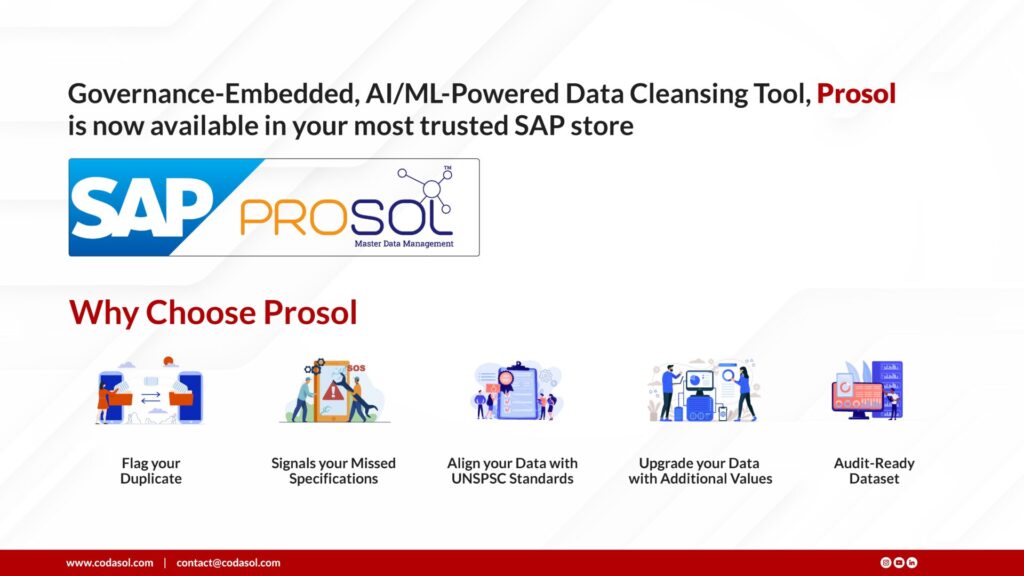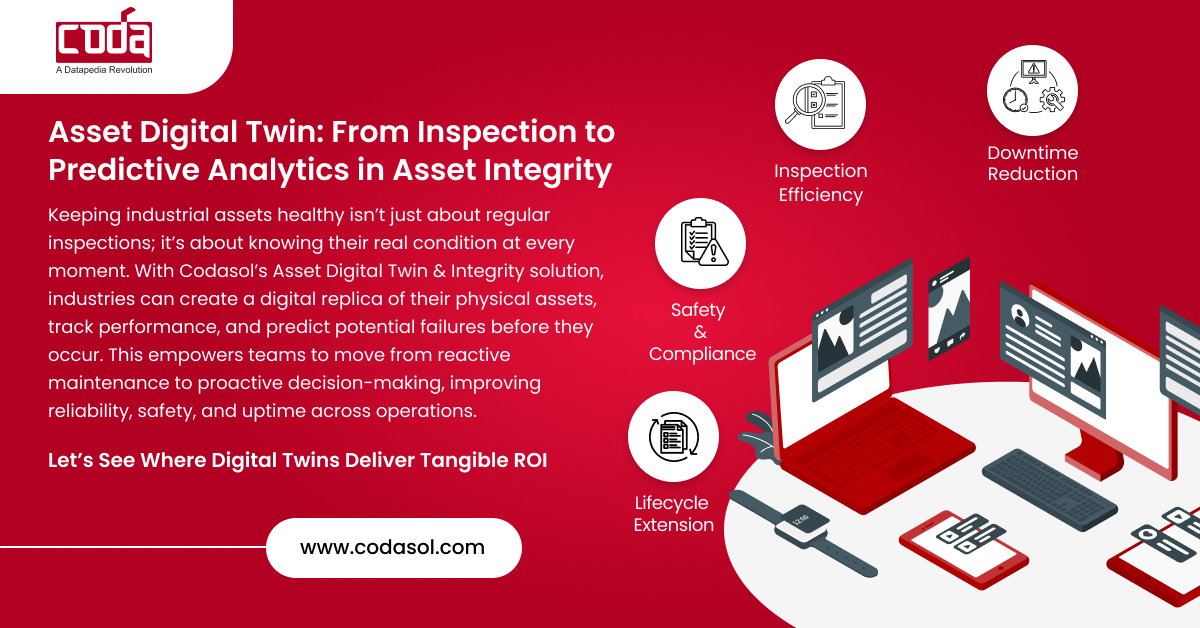The New Reality of Asset Integrity
For asset-intensive sectors like Oil & Gas, Utilities, and EPC, every unplanned shutdown carries a price tag that extends beyond maintenance costs; it impacts safety, compliance, and productivity. Traditional inspection methods often fail to detect early anomalies or deliver the full visibility leaders need to manage asset integrity at scale. Asset Digital Twin, a dynamic, data-driven 3D replica that fuses physical asset data with real-time analytics. It transforms how enterprises inspect, monitor, and predict asset performance, enabling them to make proactive decisions rather than reactive firefighting.
What an Asset Digital Twin Really Is
An Asset Digital Twin is not just a 3D model, it’s a living, evolving representation of a physical asset, continuously updated with real-world data.
It integrates multiple data sources like 3D laser scans, IoT sensors, maintenance logs, and engineering drawings to create a unified, intelligent environment. Unlike static CAD files, an asset digital twin provides real-time visualization, predictive insights, and traceable history across an asset’s lifecycle.
In asset integrity management, this means engineers can visualize corrosion points, simulate stress under load, or assess performance degradation without dismantling a single component.
From Inspection to Predictive Analytics: How It Works
Here’s how leading organizations implement the Asset Digital Twin pipeline:
- Data Capture & Digitization
High-resolution 3D laser scanners or drones capture every geometric detail of industrial assets, even in hazardous or inaccessible zones. - Sensor Integration
IoT devices feed operational data such as vibration, pressure, corrosion rate, or temperature into the twin for real-time updates. - Data Fusion
The digital twin merges 3D geometry with process data, inspection history, and ERP or CMMS records, ensuring a single source of truth. - Analytics & Anomaly Detection
AI models and predictive algorithms detect early deviations, allowing maintenance teams to intervene before failure occurs. - Predictive Simulation
Engineers can run what-if scenarios predicting fatigue, stress, or corrosion without interrupting operations. - Visualization & Decision Layer
Decision-makers view high-fidelity 3D dashboards that correlate performance trends with actual physical conditions. - Continuous Feedback Loop
Each update refines the model, creating a self-improving ecosystem that mirrors the physical asset’s evolution.
Traditional Inspection vs. Asset Digital Twin
| Aspect | Traditional Inspection | Asset Digital Twin |
|---|---|---|
| Frequency | Periodic, manual | Continuous, real-time |
| Accuracy | Dependent on human observation | Data-driven, measurable precision |
| Risk Exposure | High (shutdowns, hazardous access) | Low (remote & digital validation) |
| Cost Impact | Reactive maintenance costs | Preventive cost savings |
| Insight | Isolated data | Integrated, visual, predictive intelligence |
| Compliance | Manual documentation | Automated, auditable workflows |
The ROI of an Asset Digital Twin in Integrity Management
For decision-makers, every investment must demonstrate measurable business value. Here’s how digital twins deliver tangible ROI across critical metrics:
- Downtime Reduction: Predictive analytics minimizes unplanned outages by up to 30–50%.
- Inspection Efficiency: Remote and automated scanning reduces manual inspection costs by 25–40%.
- Safety & Compliance: Less physical intervention in hazardous zones means fewer safety incidents.
- Lifecycle Extension: Continuous monitoring helps optimize asset performance and extend life expectancy.
- Data Confidence: A single digital truth ensures audit-ready compliance and traceability.

Ready to pilot your Asset Digital Twin?
Transform inspection inefficiencies into predictive insights with the deployment of an end-to-end digital twin.
Industry Use Cases: Proven Impact Across Sectors
Oil & Gas:
A major national oil company in Abu Dhabi faced challenges with incomplete documentation and inaccessible equipment zones. CODASOL, in partnership with Bosch, implemented a high-precision Asset Digital Twin solution to scan, validate, and model complex geometries without dismantling assets.
Key outcomes:
- Engineering-ready 3D models enabling accurate CFD and FEA simulations.
- Reliable digital documentation for long-term maintenance and design validation.
- Reduced downtime and inspection costs through non-invasive scanning.
- Established a scalable digital workflow replicable across future assets.
This project showcased how the Asset Digital Twin transforms field-level integrity management into a strategic digital advantage, setting a new standard for Oil & Gas asset modernization.
Utilities
Utility companies are using asset twins for predictive maintenance of transformers, substations, and pipelines. Continuous monitoring has reduced equipment downtime by 25% while improving failure detection accuracy.
EPC & Construction
Engineering and construction firms leverage asset twins to verify structural integrity, manage project deviations, and integrate BIM data with operational analytics bridging design and execution for seamless project delivery.
Implementation Challenges and How to Overcome Them
- High Upfront Investment
Begin with pilot assets to establish measurable ROI. Scale only after achieving operational wins. - Data Integration Silos
Use robust Master Data Management (MDM) systems to unify CAD, ERP, and sensor data into a single data model. - Legacy Systems Compatibility
Employ open APIs and middleware for smooth interoperability with existing software ecosystems. - Skill Gaps
Upskill maintenance and inspection teams on data interpretation and twin operations. - Cybersecurity Risks
Secure the twin with encrypted data channels, access control, and compliance with ISO 27001 standards.
Measuring Success: KPIs and Maturity Model
To quantify progress, track key indicators:
- Asset Uptime (%)
- Maintenance Cost Reduction (%)
- Inspection-to-Repair Lead Time
- Failure Prediction Accuracy
- Compliance Readiness & Audit Score
Digital Twin Maturity Model:
| Level | Description | Value Delivered |
|---|---|---|
| 1. Descriptive | 3D model with static data | Visualization |
| 2. Diagnostic | Real-time monitoring | Operational awareness |
| 3. Predictive | Forecasts performance & failure | Downtime reduction |
| 4. Prescriptive | Automated recommendations | Cost & performance optimization |
| 5. Autonomous | Self-correcting systems | Continuous efficiency |
Companies in the GCC and India are moving from Level 2 to Level 4 maturity, unlocking significant ROI through predictive and prescriptive analytics.
Strategic Recommendations for Decision-Makers
- Start Small: Choose a high-value asset as a pilot and define clear success KPIs.
- Integrate Early: Connect your twin with ERP, CMMS, and MDM systems to maintain data integrity.
- Scale Strategically: Move from asset-level to system-level twins for networked performance insight.
- Monitor & Iterate: Treat the twin as an evolving asset. Update it with each inspection cycle.
Frequently Asked Questions
1. Is an Asset Digital Twin just a 3D model?
No. While 3D modeling forms the base, a digital twin integrates live operational data and analytics to simulate real-world behavior.
2. How soon can we expect ROI?
Most enterprises observe measurable ROI within 12–18 months of pilot implementation, mainly through reduced downtime and maintenance costs.
3. Can it work for brownfield assets?
Yes. 3D laser scanning and photogrammetry enable precise modeling even for aging or undocumented equipment.
4. How secure is the data?
Modern twins are built with encrypted protocols, role-based access, and compliance-ready storage for data integrity.
5. How does it integrate with ERP or CMMS?
Integration via APIs ensures seamless data flow between operational systems, maintaining a unified “source of truth.”
Conclusion:
The Asset Digital Twin is not just a visualization tool—it’s a transformation framework. For Oil & Gas, Utilities, and EPC industries, it bridges the gap between inspection data and predictive intelligence, enabling proactive asset management, improved safety, and cost control.
Enterprises that adopt digital twins today position themselves for a future of resilient, self-learning infrastructure.
Safeguard your asset integrity with CODASOL’s Asset Digital Twin.
Discover how data, AI, and 3D precision can redefine your reliability strategy.


Discover how Prosol streamlines material master enhancement in SAP

